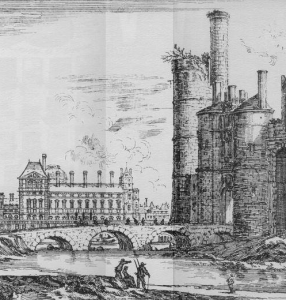Turin, June 19 – 21, 2014
Deadline-CFP: 30 sept. 2013
Call for Papers for Sessions at the Third International Meeting of the European Architectural History Network
 Fortified Palaces in Early Modern Europe 1400-1700
Fortified Palaces in Early Modern Europe 1400-1700
Please send your proposal before September 30, 2013, by using the special forms at www.eahn.org.
—
From the fifteenth century onwards the spread of firearms profoundly affected the medieval castle. Residential and defensive elements that were once united in a single structure now evolved into separate architectural entities. The château fort gradually developed into a residential palace surrounded by a fortified perimeter. In addition, the shift from vertical to horizontal defence meant that the main trait of a stronghold was no longer its profile but its plan. As the plan became dictated by firing lines, angular shapes took the place of round and square ones, and the overall geometry became regularized. Efforts to reconcile the often contradictory demands of residence and defence inspired a wide variety of architectural designs across Europe, many of which have received little scholarly attention.
This session focuses on the building typology of the ‘palazzo in fortezza’ in its broadest sense. Besides fortified palaces that were planned as a whole, it will also consider instances where new fortifications were built around an older palace or, vice versa, where a new residence was erected within a pre-existing citadel. The aim is to explore the conjunction of palatial residence and military defence.
Papers may discuss the architectural connection (or lack thereof) between the palace and its fortifications. How was the building’s defensive role combined with residential comforts and ceremonial requirements? What happened to weak elements such as entrances, windows, forecourts and gardens? Did its decorative programme reflect its martial component? Was the fortified perimeter truly functional or merely symbolic? Did its military features answer to the demands of full-scale warfare or only to limited security needs? Conversely, could a fortified palace really operate as a fully-fledged princely residence, or were there limitations to the extent of its court life? Relevant events such as an attack on a fortified palace or a courtly ceremony held within its confines may also be examined.
Of particular interest are issues of cultural interchange, considering that fortification was an ‘international style’, whilst palatial architecture was firmly tied to local and dynastic traditions. We welcome cases from the whole of Europe (including its overseas colonies) and especially from less studied regions such as Central and Eastern Europe. We explicitly seek analytical papers that enable transnational comparison.
NB: The session fits within the framework of the ESF Research Networking Programme ‘PALATIUM. Court Residences as Places of Exchange in Late Medieval and Early Modern Europe (1400-1700)’ (www.courtresidences.eu).
SESSION CHAIRS:
Pieter Martens, FWO-University of Leuven
Konrad Ottenheym, Utrecht University
Nuno Senos, Universidade Nova de Lisboa
Please submit your proposal through the conference website (http://www.eahn2014.polito.it/), or or get in touch with the session chairs: Pieter Martens (pieter.martens@asro.kuleuven.be), Konrad Ottenheym (k.a.ottenheym@uu.nl), and Nuno Senos (nuno.senos@gmail.com).
URL de référence : http://arthist.net/archive/5872

Leave a Reply
You must be logged in to post a comment.